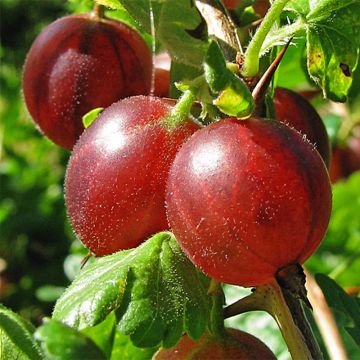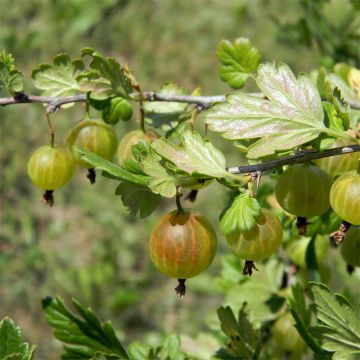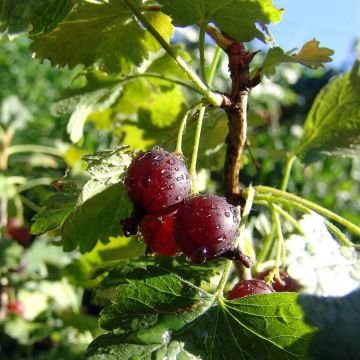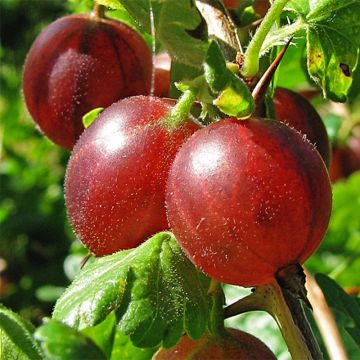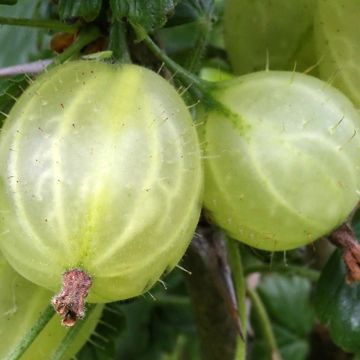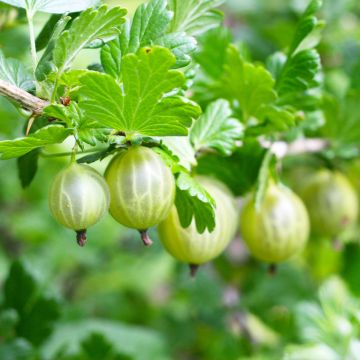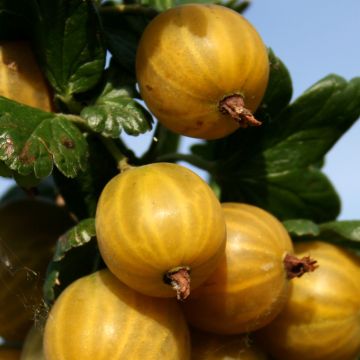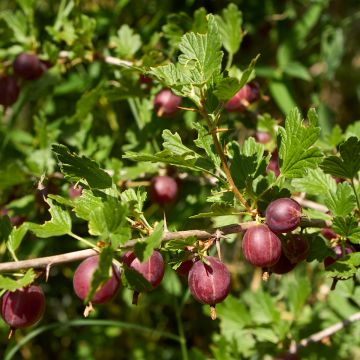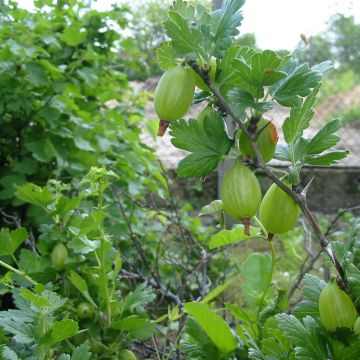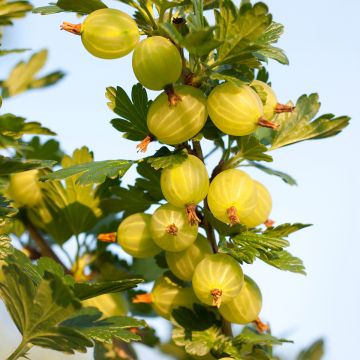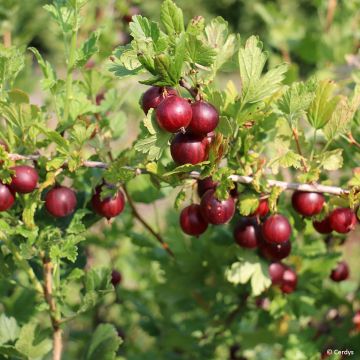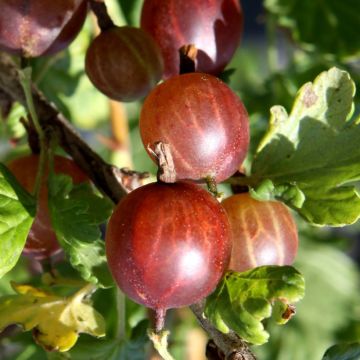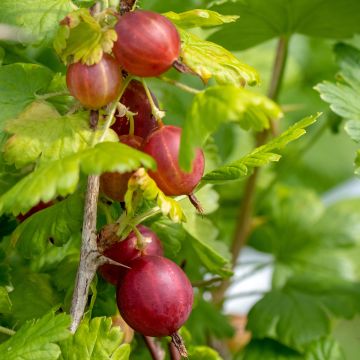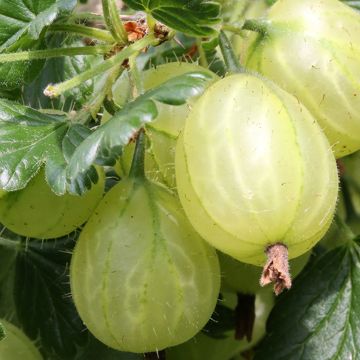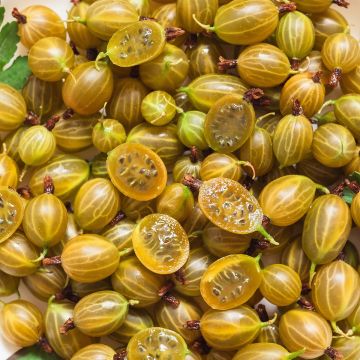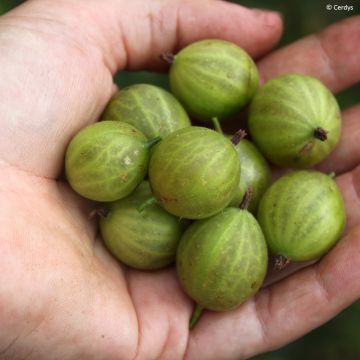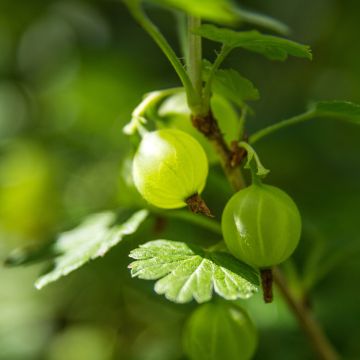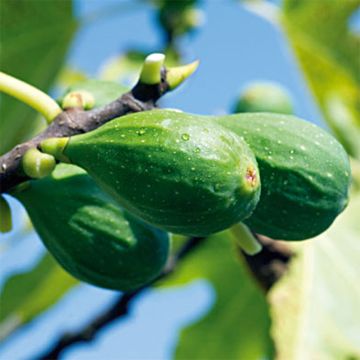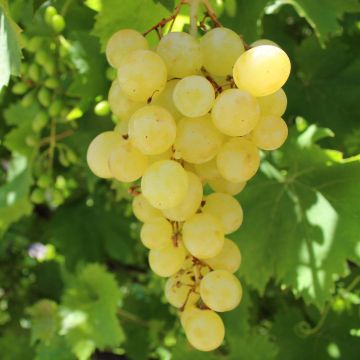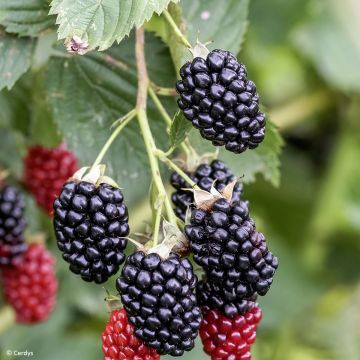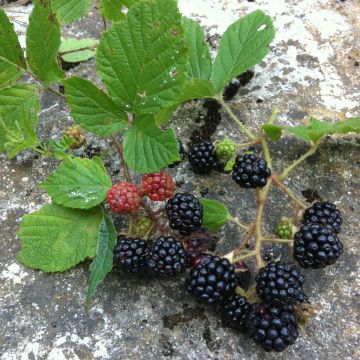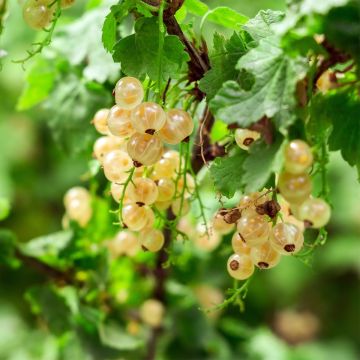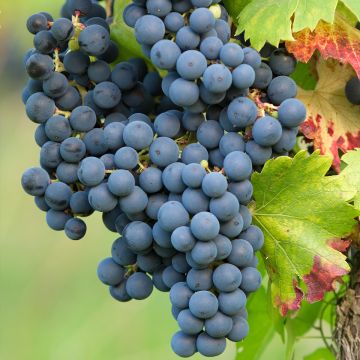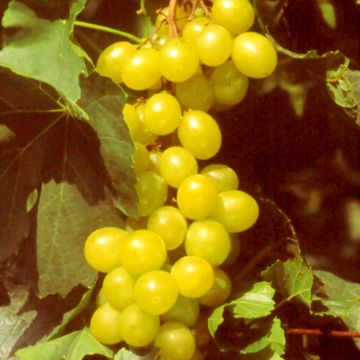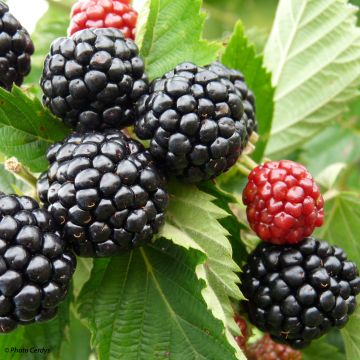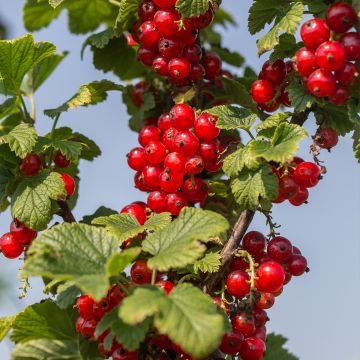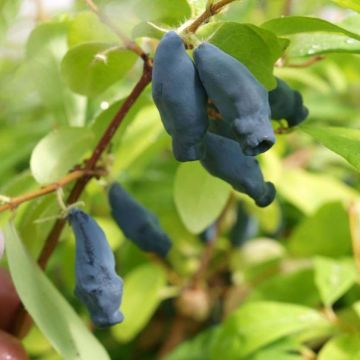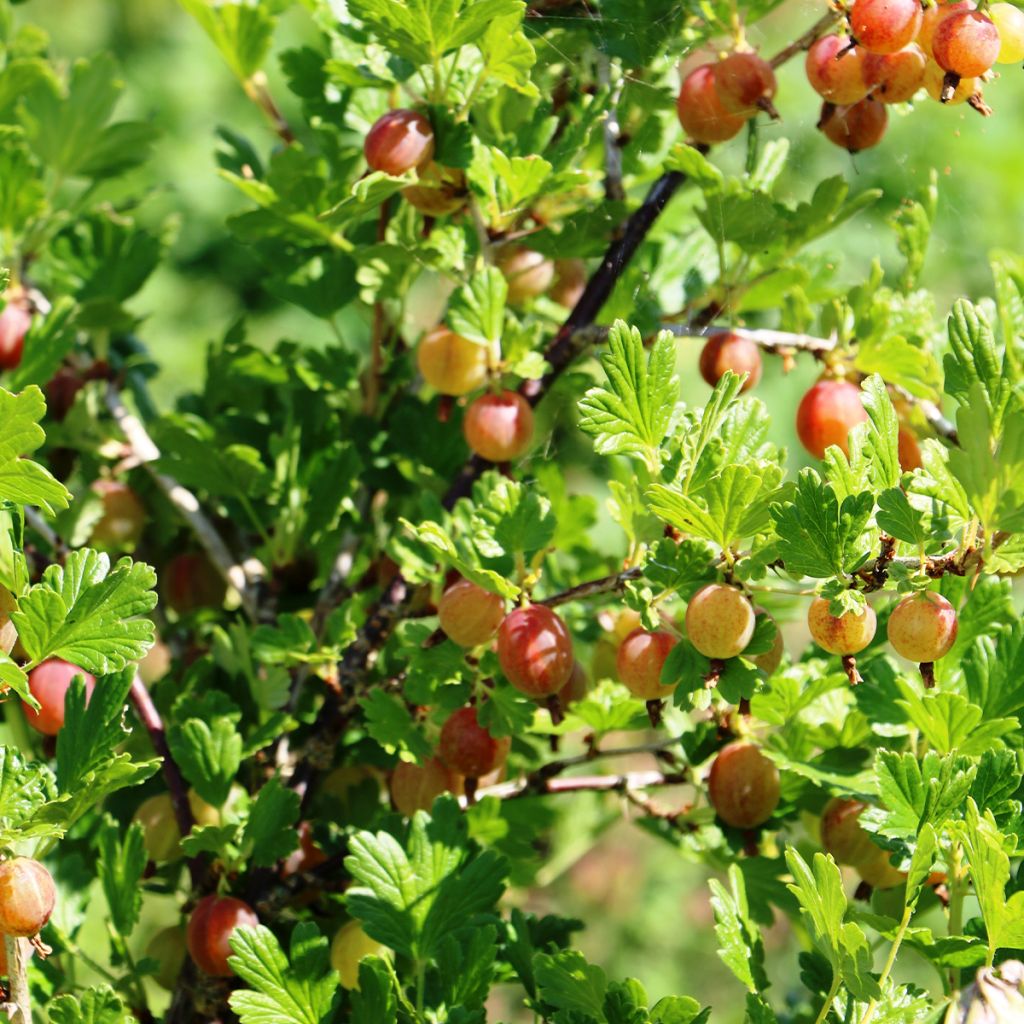

Gooseberry Pixwell - Ribes uva-crispa
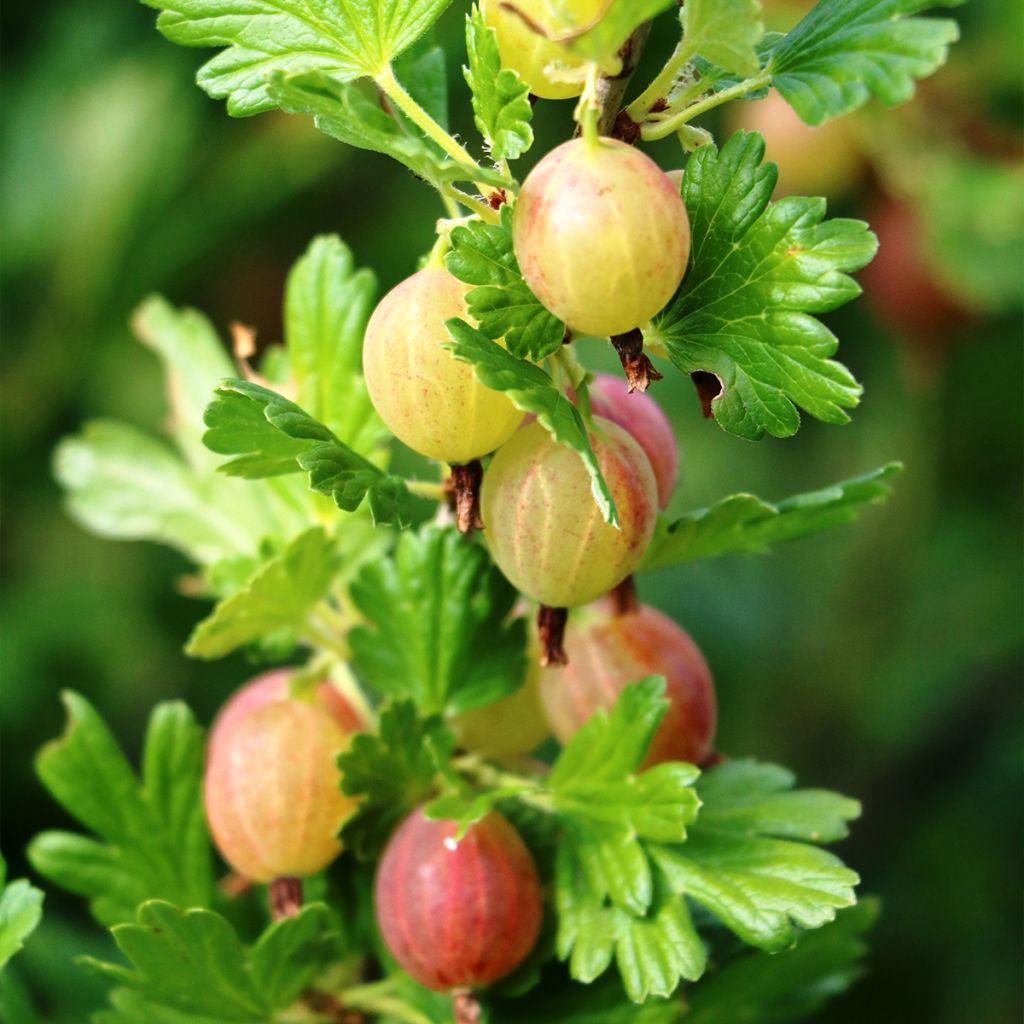

Gooseberry Pixwell - Ribes uva-crispa
Gooseberry Pixwell - Ribes uva-crispa
Ribes uva-crispa Pixwell
Gooseberry
Why not try an alternative variety in stock?
View all →This plant carries a 6 months recovery warranty
More information
We guarantee the quality of our plants for a full growing cycle, and will replace at our expense any plant that fails to recover under normal climatic and planting conditions.
From €5.90 for pickup delivery and €6.90 for home delivery
Express home delivery from €8.90.
Description
The Pixwell Gooseberry bush is a self-fertile, productive, vigorous variety, particularly resistant to powdery mildew and cold. It produces elongated fruits with a slightly hairy pink skin that turns wine-coloured when ripe. Their translucent pink flesh is pleasantly fragrant and has a sweet and tangy flavour. The fruiting occurs in July, all along the thorny branches, ensuring a plentiful harvest. The fruits are rich in pectin, perfect for making jellies or jams. They are delicious on their own and their sweet and tangy aroma is wonderful in pastries and as an accompaniment to fish or savoury dishes.
The Pixwell Gooseberry bush (Ribes uva-crispa), also known as the Spiny Gooseberry, Curly Grape, Louse-clapper, Louse-biter, Balloon or Wineberry, belongs to the Grossulariaceae family, like Redcurrant bushes (Ribes rubrum) and Blackcurrant bushes (Ribes nigrum). Cultivated in northern Europe since the 16th century, the Gooseberry bush is a fertile hybrid resulting from the cross-breeding of two species native to Europe and North Africa, still found spontaneously in mounyain forests in Scotland, France, and the Caucasus. It is a spreading, thorny shrub with slightly stiff, branched, and spreading twigs. This very hardy bush reaches a height of 1 m (3ft) with a spread of 75 cm (30in). The foliage is deciduous, composed of palmate, lobed, and aromatic, medium green leaves. This bush resembles classic gooseberries but is mainly distinguished by its fruits which are larger and sweeter along the branches. Apart from a few thornless varieties, the Gooseberry bush has prickly stems. Flowering occurs in spring, in the form of clusters of insignificant greenish flowers, loved by bees. In July, fruiting mainly occurs on one- and two-year-old branches. The bush is then covered with translucent, round to oval, 1.2 cm (1in) in diameter berries resembling marbles and containing small seeds, distributed along the branches. Harvesting place as the fruits ripen, and is made easier by the size of the berries.
The Pixwell Gooseberry bush produces approximately 3 to 5 kg of fruit per plant depending on the age and growing conditions of the plant. The fruits are rich in vitamin C, antioxidants, minerals and trace elements, as well as potassium, calcium, and phosphorus. Moreover, their low sugar content classifies them among the least calorific small fruits (50 kcal per 100 g). The fruit is detoxifying for the body thanks to its diuretic, digestive, liver decongestant, and laxative properties, provided it is consumed when barely ripe.
The fruits of the Pixwell Gooseberry bush are like colourful marbles and a real treat in the summer. Picked from the bush, they are delicious to eat fresh, and for added indulgence, they can be sprinkled with a little granulated sugar. In cooking, to balance the acidity of the fruits, they can be blanched for a minute and then cooled under cold water. Excellent in jellies or jams, they can also be used to garnish tarts and make cakes. They are perfect for making syrups, sorbets, ice creams, or desserts. The subtle balance between the flavours and acidity of the fruits offers an interesting accompaniment to meats (game, poultry, etc.), oily fish (sardines, mackerel, tuna, etc.), or as a touch in salads.
In summer, the Gooseberry bush brings beautiful harvests and delicious fruits, but be careful of the thorns. In the garden, it can be planted alongside other Gooseberry bushes, Raspberry bushes, or other varieties of small fruits to create a delicious hedge.
Report an error about the product description
Gooseberry Pixwell - Ribes uva-crispa in pictures
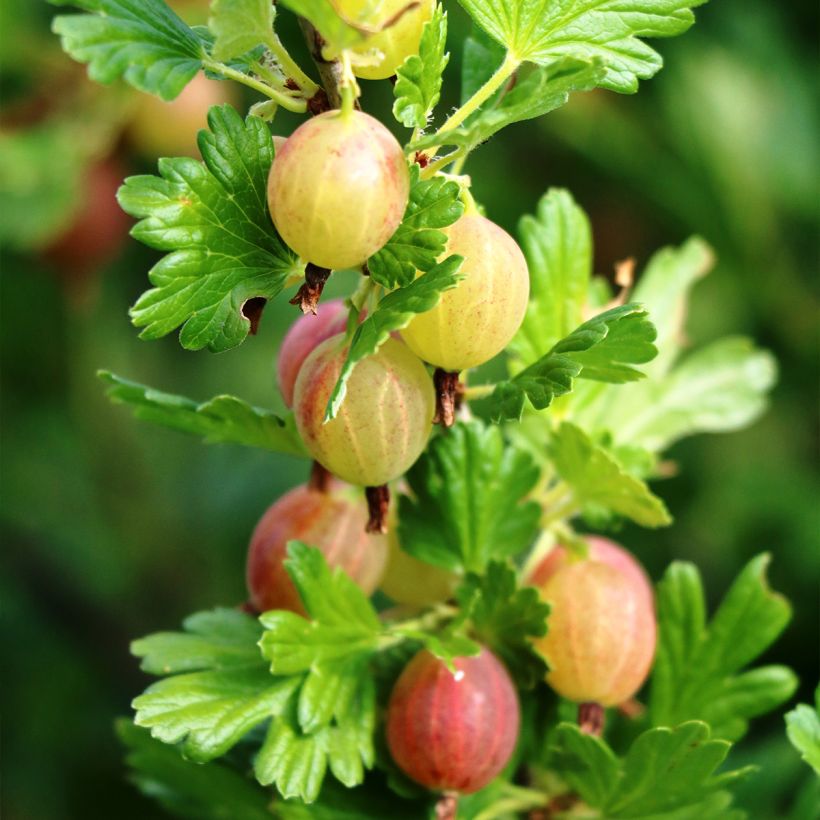

Plant habit
Fruit
Flowering
Foliage
Botanical data
Ribes
uva-crispa
Pixwell
Grossulariaceae
Gooseberry
Cultivar or hybrid
Other Gooseberry bush
Planting and care
Plant the Gooseberry from October to March. It likes ordinary soils, even poor ones, with a tendency towards acidity. The Gooseberry thrives in well-drained, moist soil, but not constantly wet. It doesn't like heat and drought, so you can plant it in the sun in the north but in partial shade in the south. Choose a location sheltered from strong winds.
When planting, space the plants 0.80 m (3ft) apart in all directions. For bare-root plants, soak the roots in a root dip to prevent air pockets between the roots and the soil. You can either prepare the root dip by mixing 1/3 fine soil or compost, 1/3 cow manure or compost, and 1/3 rainwater, or buy it commercially. Dig a hole, incorporate well-rotted manure or compost into the soil, place the plant, and cover it with soil. Water generously. Then mulch the soil to retain moisture in summer.
An application of organic fertiliser at the start of the growing season will support fruit production and plant health. The Gooseberry can be attacked by aphids and mites, which can be eliminated by spraying with soapy water or a garlic decoction. It is also susceptible to fungal diseases, such as anthracnose (brown spots on leaves and fruits), powdery mildew (white powdery growth), grey mold (white then brown growth on berries), and rust (orange pustules on the underside of leaves). Regularly spray with comfrey or nettle tea, or a horsetail decoction. Remove and burn all diseased parts. In June-July, protect the harvest with nets to deter birds.
In a gooseberry plantation, as in any plantation, it is important to alternate varieties and species, when space allows: pollination will be promoted, and the spread of epidemics or diseases will be limited.
Planting period
Intended location
Care
This item has not been reviewed yet - be the first to leave a review about it.
Berries
Haven't found what you were looking for?
Hardiness is the lowest winter temperature a plant can endure without suffering serious damage or even dying. However, hardiness is affected by location (a sheltered area, such as a patio), protection (winter cover) and soil type (hardiness is improved by well-drained soil).

Photo Sharing Terms & Conditions
In order to encourage gardeners to interact and share their experiences, Promesse de fleurs offers various media enabling content to be uploaded onto its Site - in particular via the ‘Photo sharing’ module.
The User agrees to refrain from:
- Posting any content that is illegal, prejudicial, insulting, racist, inciteful to hatred, revisionist, contrary to public decency, that infringes on privacy or on the privacy rights of third parties, in particular the publicity rights of persons and goods, intellectual property rights, or the right to privacy.
- Submitting content on behalf of a third party;
- Impersonate the identity of a third party and/or publish any personal information about a third party;
In general, the User undertakes to refrain from any unethical behaviour.
All Content (in particular text, comments, files, images, photos, videos, creative works, etc.), which may be subject to property or intellectual property rights, image or other private rights, shall remain the property of the User, subject to the limited rights granted by the terms of the licence granted by Promesse de fleurs as stated below. Users are at liberty to publish or not to publish such Content on the Site, notably via the ‘Photo Sharing’ facility, and accept that this Content shall be made public and freely accessible, notably on the Internet.
Users further acknowledge, undertake to have ,and guarantee that they hold all necessary rights and permissions to publish such material on the Site, in particular with regard to the legislation in force pertaining to any privacy, property, intellectual property, image, or contractual rights, or rights of any other nature. By publishing such Content on the Site, Users acknowledge accepting full liability as publishers of the Content within the meaning of the law, and grant Promesse de fleurs, free of charge, an inclusive, worldwide licence for the said Content for the entire duration of its publication, including all reproduction, representation, up/downloading, displaying, performing, transmission, and storage rights.
Users also grant permission for their name to be linked to the Content and accept that this link may not always be made available.
By engaging in posting material, Users consent to their Content becoming automatically accessible on the Internet, in particular on other sites and/or blogs and/or web pages of the Promesse de fleurs site, including in particular social pages and the Promesse de fleurs catalogue.
Users may secure the removal of entrusted content free of charge by issuing a simple request via our contact form.
The flowering period indicated on our website applies to countries and regions located in USDA zone 8 (France, the United Kingdom, Ireland, the Netherlands, etc.)
It will vary according to where you live:
- In zones 9 to 10 (Italy, Spain, Greece, etc.), flowering will occur about 2 to 4 weeks earlier.
- In zones 6 to 7 (Germany, Poland, Slovenia, and lower mountainous regions), flowering will be delayed by 2 to 3 weeks.
- In zone 5 (Central Europe, Scandinavia), blooming will be delayed by 3 to 5 weeks.
In temperate climates, pruning of spring-flowering shrubs (forsythia, spireas, etc.) should be done just after flowering.
Pruning of summer-flowering shrubs (Indian Lilac, Perovskia, etc.) can be done in winter or spring.
In cold regions as well as with frost-sensitive plants, avoid pruning too early when severe frosts may still occur.
The planting period indicated on our website applies to countries and regions located in USDA zone 8 (France, United Kingdom, Ireland, Netherlands).
It will vary according to where you live:
- In Mediterranean zones (Marseille, Madrid, Milan, etc.), autumn and winter are the best planting periods.
- In continental zones (Strasbourg, Munich, Vienna, etc.), delay planting by 2 to 3 weeks in spring and bring it forward by 2 to 4 weeks in autumn.
- In mountainous regions (the Alps, Pyrenees, Carpathians, etc.), it is best to plant in late spring (May-June) or late summer (August-September).
The harvesting period indicated on our website applies to countries and regions in USDA zone 8 (France, England, Ireland, the Netherlands).
In colder areas (Scandinavia, Poland, Austria...) fruit and vegetable harvests are likely to be delayed by 3-4 weeks.
In warmer areas (Italy, Spain, Greece, etc.), harvesting will probably take place earlier, depending on weather conditions.
The sowing periods indicated on our website apply to countries and regions within USDA Zone 8 (France, UK, Ireland, Netherlands).
In colder areas (Scandinavia, Poland, Austria...), delay any outdoor sowing by 3-4 weeks, or sow under glass.
In warmer climes (Italy, Spain, Greece, etc.), bring outdoor sowing forward by a few weeks.

































